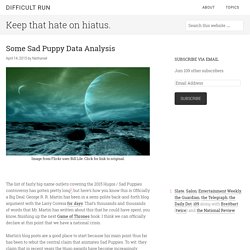

Umrah Packages for Groups. Burning Incense Is Psychoactive: New Class Of Antidepressants Might Be Right Under Our Noses. Religious leaders have contended for millennia that burning incense is good for the soul.

Now, biologists have learned that it is good for our brains too. An international team of scientists, including researchers from Johns Hopkins University and the Hebrew University in Jerusalem, describe how burning frankincense (resin from the Boswellia plant) activates poorly understood ion channels in the brain to alleviate anxiety or depression. This suggests that an entirely new class of depression and anxiety drugs might be right under our noses. "In spite of information stemming from ancient texts, constituents of Bosweilla had not been investigated for psychoactivity," said Raphael Mechoulam, one of the research study's co-authors.
"We found that incensole acetate, a Boswellia resin constituent, when tested in mice lowers anxiety and causes antidepressive-like behavior. To determine incense's psychoactive effects, the researchers administered incensole acetate to mice. Casting a Circle. The Purposes of a Circle A sacred circle has several purposes, the most significant of which is to define an area where formal ritual work can be performed.

A circle is a place in which the rules and conditions are different to that of the everyday world. A circle is not a barrier, but a doorway to another world. To contain any magickal energy raised and to prevent its dissipation until it has been used up is another purpose of the circle. The sacred circle does not need to be physically represented (drawn or marked on the ground), it just needs to be visualized. The circle is a spiritual entity. 1. 2. 3. Greek Mythology: FAMILY TREE OF THE GREEK GODS. The complete family tree of the gods is displayed over eight indexed charts.

The basic structure follows Hesiod's Theogony, but that author's genealogies have been expanded with a plethora of additional gods, spirits and creatures sourced from other classical sources. Where there is disagreement amongst ancient writers as to the genealogy of a certain character, the oldest and/or most popular source has been selected for the chart. An additional family tree depicts the divine genealogy given in Hesiod's Theogony. Click on any name in the chart to view the full page entry for that individual. INDEX Index of names in the family tree KEY Overview of and key to reading the charts. Witch Spell Chart. Subterranean Press. Ziarats of Muslims. 60 Influential Figures in Fantasy, Index. Well this ended up a lot bigger than I originally intended… This is a project to put together, largely off the top of my head and with little revision, a list of fifty authors with the greatest influence on the Fantasy genre.

There ended up being rather more than 50. Here is the initial setting-out of my intentions, some definitions, some caveats, and so forth. Then the authors, in batches (not entirely chronologically):Romantic, Gothic and Oriental (early foundational influences)The Macabre (the 19th century tradition of horror/dark fantasy/mystery)Other Worlds (four writers late in the century who took fiction to new places)Pulp Fiction (etc.) I’ve left off in 2000, both because of my relative ignorance of modern Fantasy, and simply because, whatever we know about the good and the bad, it’s too early yet to make judgements about the ‘influential’ in the last decade. Like I say (many times over), though: this is not intended as an authoritative or academically sound list.
Like this: Some Sad Puppy Data Analysis. Image from Flickr user Bill Lile.

Click for link to original. The list of fairly big-name outlets covering the 2015 Hugos / Sad Puppies controversy has gotten pretty long1, but here’s how you know this is Officially a Big Deal: George R. R. Martin has been in a semi-polite back-and-forth blog argument with the Larry Correia for days. That’s thousands and thousands of words that Mr. Book. Martin’s blog posts are a good place to start because his main point thus far has been to rebut the central claim that animates Sad Puppies. As these heavyweights have been trading expert opinion, personal stories, and plain old anecdotes, it just so happens that I spent a good portion of the weekend digging into the data to see if I could find any objective evidence for or against the Sad Puppy assertions.
One additional note: unless otherwise state the Hugo categories that I looked into were the literary awards for best novel, novella, novelette, and short story. Finding 1: Sad Puppies vs.